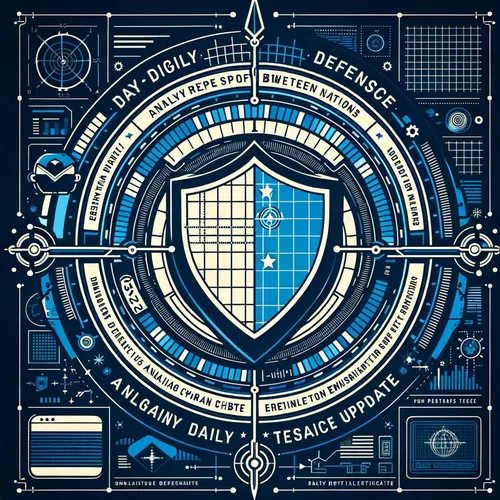China Hacks US Courts: AI Weapons, APT Trojans, and a Cyber Storm Brewing!
- Author
- Quiet. Please
- Published
- Wed 13 Aug 2025
- Episode Link
- https://www.spreaker.com/episode/china-hacks-us-courts-ai-weapons-apt-trojans-and-a-cyber-storm-brewing--67359544
This is your China Hack Report: Daily US Tech Defense podcast.
Hey listeners, Ting here with your China Hack Report: Daily US Tech Defense, and let’s not waste a microsecond—because the past 24 hours have been anything but boring in the world of China-linked cyber activities. Grab your VPN, refresh your threat dashboards, and let’s plug in.
First up is the incident making judges everywhere wish for a return to paper files. According to TechInformed, the US federal courts got hit by a sophisticated and persistent cyber siege. The attack zeroed in on the Case Management/Electronic Case Files system, which is basically the beating digital heart of the federal judiciary. Legal pros, PACER users—you know, everyone who likes to sue someone or read about it online—found the system compromised. Multiple states are reportedly affected, with sensitive court data exposed. The Administrative Office of the US Courts is being tight-lipped, but the word is out: federal judicial infrastructure has taken a major hit.
Now, if you’re wondering where the finger is being pointed, let’s just say China remains the designated cyber boogeyman. As War on the Rocks notes, a recent executive order from the Trump administration identified China as “the most active and persistent cyber threat to US government, private sector, and critical infrastructure networks.” That’s not just bureaucratic saber-rattling—CISA and Cyber Command are in full alert mode, prioritizing assessments and emergency countermeasures.
On the malware front, no brand-new zero-day got its big break this morning, but advanced persistent threat groups linked to China are suspected of using modded trojans tailored for judicial networks. Emergency patches are coming down fast, but CISA’s immediate prescription is classic: update, segment, monitor, and of course, don’t trust any email from Cousin Gary that just says “Open Me.”
What’s really spicy is the new weapon in Beijing’s arsenal: artificial intelligence. Homeland Security Today and The New York Times report Chinese companies are deploying AI to monitor and manipulate not just public opinion in Hong Kong and Taiwan, but to also scrape data on US lawmakers and influential Americans. The US intelligence community is anxiously watching for signs of attempted election interference or opinion steering here at home.
Meanwhile, sectoral targeting remains broad. It’s not just courts—energy, telecom, and logistics are seeing higher-than-average phishing and credential theft attempts. No surprise, given the mega-alignment going on between China, Russia, Iran, and North Korea, as highlighted by Security World. It’s pragmatic alignment, axis-of-cyber style, all aiming to chip away at US interests.
CISA’s key recommendations today: enforce multi-factor authentication—seriously, do not skip this step—systematically audit network access, apply all emergency patches, and stand up 24/7 threat monitoring if you haven’t already. Public-private threat sharing is now more than a buzzword—if you see something, share something.
And that’s your US-China cyber storm, 24-hour edition. Thanks for tuning in, listeners! Don’t forget to subscribe for tomorrow’s digital drama and defense deep dive. This has been a quiet please production, for more check out quiet please dot ai.
For more http://www.quietplease.ai
Get the best deals https://amzn.to/3ODvOta
